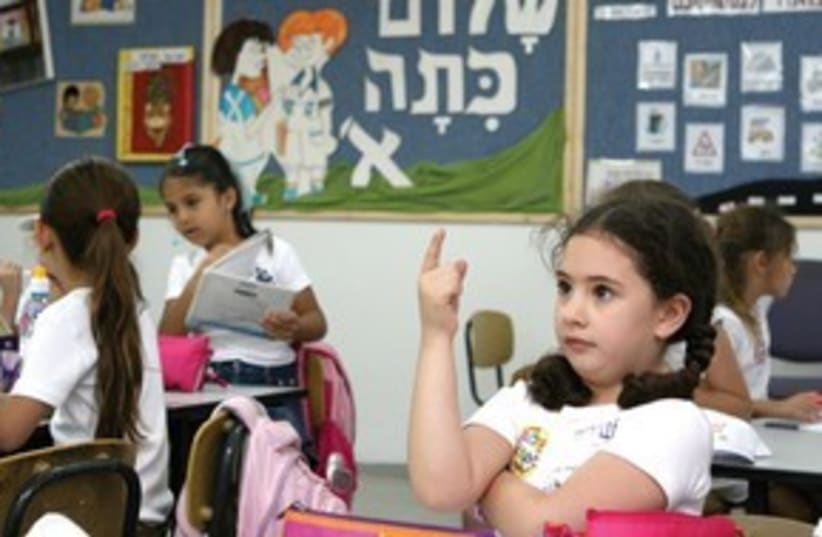RELATED:Hi-tech ed Parents advised to lose kids’ bad habits before school year Sa’ar’s announcement on Sunday was part of a presentation to the cabinet of a series of targets for the 5771 school year that begins Wednesday.These include strengthening the core curriculum through additional classroom hours, increased emphasis on values education, cracking down on violence, and efforts to bring schools up to the technological standards of the 21st century.Sa’ar said the ministry was also looking to launch a new academic track called “Culture and Heritage of Israel,” and to increase the number of students studying in technology-based vocational tracks.About 1,529,000 pupils will attend school in 57,800 classrooms, as opposed to 1,502,400 and 56,860 last year, respectively, according to Education Ministry statistics. The number of educational staff has been increased to 131,000, from 128,000 last year.Prime Minister Binyamin Netanyahu praised the new initiatives and also championed the increase in classroom hours.“We will add mathematics and science classroom hours in elementary and intermediate schools. This year, for the first time, we will also usher in a computerization plan for approximately 200 schools in the North and South,” he said.Netanyahu said that the computer initiative “will be expanded to another 600 schools next year and it is designed to adapt the State of Israel’s educational system to the 21st century by introducing computers, broadband connections and other existing technologies that, regrettably, have still not reached classrooms.“This year, we will begin to close the gap,” he said.
Schools to stress Hebrew
This school year will include an increased emphasis on the Hebrew language.

RELATED:Hi-tech ed Parents advised to lose kids’ bad habits before school year Sa’ar’s announcement on Sunday was part of a presentation to the cabinet of a series of targets for the 5771 school year that begins Wednesday.These include strengthening the core curriculum through additional classroom hours, increased emphasis on values education, cracking down on violence, and efforts to bring schools up to the technological standards of the 21st century.Sa’ar said the ministry was also looking to launch a new academic track called “Culture and Heritage of Israel,” and to increase the number of students studying in technology-based vocational tracks.About 1,529,000 pupils will attend school in 57,800 classrooms, as opposed to 1,502,400 and 56,860 last year, respectively, according to Education Ministry statistics. The number of educational staff has been increased to 131,000, from 128,000 last year.Prime Minister Binyamin Netanyahu praised the new initiatives and also championed the increase in classroom hours.“We will add mathematics and science classroom hours in elementary and intermediate schools. This year, for the first time, we will also usher in a computerization plan for approximately 200 schools in the North and South,” he said.Netanyahu said that the computer initiative “will be expanded to another 600 schools next year and it is designed to adapt the State of Israel’s educational system to the 21st century by introducing computers, broadband connections and other existing technologies that, regrettably, have still not reached classrooms.“This year, we will begin to close the gap,” he said.